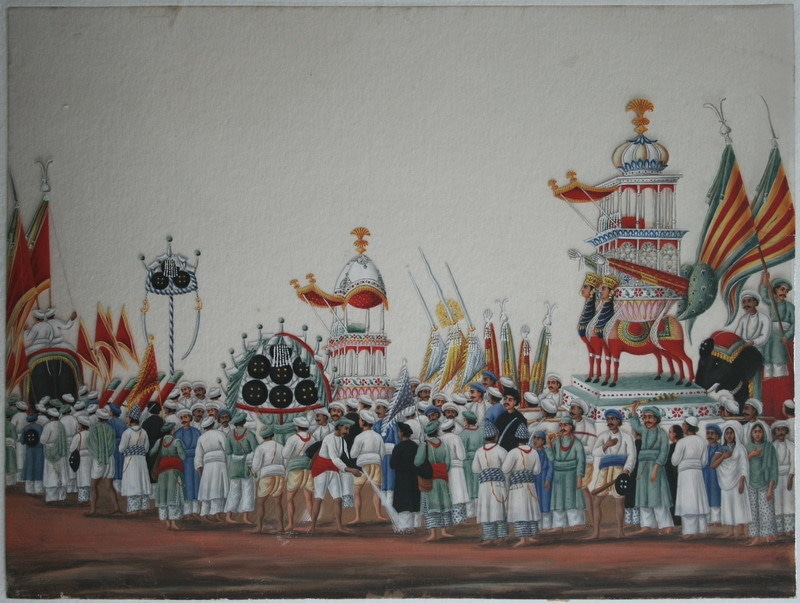Muharram in the 19th century: Indian paintings, British imagination
Muharram is the first month of the Muslim calendar, but not one to celebrate — rather, it is a month of mourning, observed in particular by Shias worldwide.
It commemorates the Battle of Karbala in 680 AD, where amongst many, the grandson of Prophet Muhammad (PBUH), Imam Hussain, was martyred and other family members of his were killed or subjected to humiliation.
Worldwide, and in South Asia, Shias mourn these deaths even today through elaborate processions and gatherings.

Leading the procession is an alam. Following it is a shroud of the martyr, decorated and bloodstained.
There is customary weeping as tragic stories from the battle are narrated.
Then begins the matam — synchronised self-flagellation as elegies and songs penned in the memory of Imam Hussain and his companions are sung.
For long in South Asia, the observance of Muharram has been accompanied by large gatherings, speeches and public grieving.
Participants are dressed in black — the colour of mourning — and as they chant poetry of lamentation, they beat their chest in synchronic unison.


Given the social and public nature of these gatherings, other communities and faiths such as Sunnis, Hindus, Sikhs and Christians have a history of being involved, albeit in different capacities.
Even though, through the ages, Muharram has been commemorated with fervour and ferocity, there is little visual evidence of it in the subcontinent before the late 17th century.
The commemoration seems to have emerged as a subject of interest only after the European invasion.

This is particularly surprising given that a series of Muslim rulers governed the subcontinent prior to the British, and recorded even the most banal details of their lives through their paintings.
Muharram seems to have caught the fancy of the British, who, in their exoticisation of the Orient, found this mass mourning both strange and intriguing.
The British and Europeans were patrons of a school of art called the Company Style or Kampani Kalam.


These paintings were made by anonymous Indian artists, exclusively for European patrons in the British East India Company and other companies.
The style blended traditional elements of the miniature school with a Western treatment of perspective, often in watercolours.
With its ritual self-flagellations and dramatised public processions, it is not surprising that Muharram both horrified and fascinated the Europeans.
At first glance, the paintings depicting Muharram reveal how it had to be sanitised to fit the audience’s sensibilities.


Rebecca M. Brown, associate professor of colonial and post-1947 South Asian art and visual culture at Johns Hopkins University, makes a noteworthy discussion of these European officers, who were often uncomfortable yet intrigued observers of this alien festival.
She asserts that the paintings are static and decontextualised when compared to the actual celebrations and processions.
They often lack a city context, strange for a festival so ingrained in active city life.
They also omitted the physicality of mourning.
The Muharram of the Company Style paintings may be solemn and static yet nevertheless, allow us a small glimpse of its presence from the silent pages of the subcontinent's visual history.
Are you researching South Asian art history? Share your insights with us at prism@dawn.com










